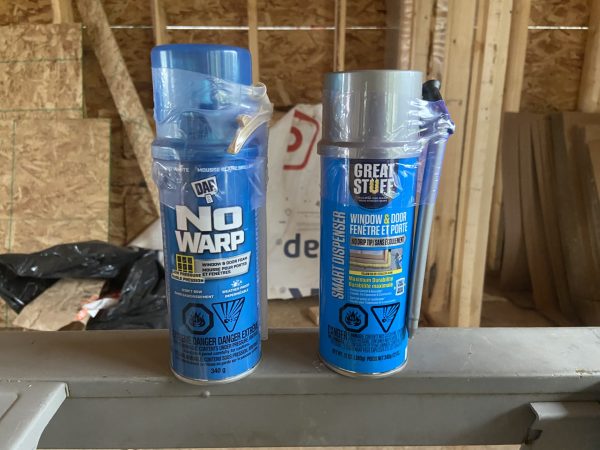
Comparing DAP and Great Stuff for Sealing Windows and Doors
When it comes to tackling drafts and boosting energy efficiency around windows and doors, spray foam insulation is an indispensable tool for DIY enthusiasts and seasoned professionals alike. Two brands dominate the retail shelves: DAP and Great Stuff. While both are quality products designed to effectively seal gaps without bowing frames, their nuanced differences in application, usability, and longevity can significantly impact your workflow and final results.
As a journeyman carpenter, I’ve spent countless hours installing and sealing windows and doors, and I’ve developed a clear preference between these two titans of foam. This article will dive deep into a direct comparison, highlighting their strengths, weaknesses, and offering practical insights to help you choose the right product for your specific needs.
Understanding Low-Expansion Foam: Why It Matters for Windows and Doors
Before we get into the head-to-head, it’s crucial to understand why low-expansion foam is the go-to choice for windows and doors. Unlike high-expansion foams used for large voids, low-expansion formulations are specifically designed to cure with minimal pressure. This characteristic is critical for preventing the bowing or warping of delicate window and door frames, which can lead to costly damage and operational issues. Both DAP and Great Stuff offer low-expansion products explicitly labeled for windows and doors, indicating their suitability for this sensitive application.
DAP Window & Door Foam: A Closer Look
DAP’s offering, often branded as “DAPtex Plus” or “DAPtex Plus Window & Door,” is a recognizable choice for many. From my experience, it has its distinct advantages, particularly for those with specific project requirements.
Application and Flow Rate: One of the most noticeable characteristics of DAP’s window and door foam is its relatively slow extrusion rate. When you press the trigger, the foam emerges less wide initially, requiring a deliberate and steady hand to achieve an even bead. For smaller, more precise gaps, this slower flow can be an advantage, allowing for meticulous application without overfilling. However, when tackling multiple units or longer runs, this becomes painfully slow coming out of the can. What might seem like a minor inconvenience on one window quickly compounds when you’re installing several doors and windows simultaneously, adding significant time to your project.
Can Longevity and Reusability: Where DAP truly shines is in its reusability. It consistently comes with an extra straw/spray nozzle, which is a game-changer for extending the life of an opened can. The ability to swap out or even cut the existing straw allows for better cleanup and reduces the likelihood of the nozzle clogging beyond repair. This thoughtful inclusion means you can confidently tackle smaller projects in stages or use a partial can weeks later without much hassle, making it an economically sound choice for intermittent use.
Color and Aesthetics: Upon curing, DAP’s window and door foam typically presents as a whitish-yellow color. While the foam is usually concealed behind trim or flashing, its distinct hue can be a minor aesthetic consideration if any portion might remain exposed.

Seal Performance: Critically, DAP’s foam does an excellent job of not bowing window or door frames while drying. Its controlled expansion ensures a tight, effective air seal without deforming the frame, which is paramount for proper operation and long-term energy efficiency. The cured foam forms a durable barrier against drafts and moisture infiltration.
Nozzle Attachment: The nozzle attachment mechanism on DAP cans generally involves screwing the straw dispenser directly onto the can valve. While this provides a secure connection when tightened sufficiently, there’s a certain reliance on “screwing it as tight as you can and hoping you don’t get a blowout.” In the heat of an installation, a high-pressure blowout can be messy and waste valuable material, causing frustrat
Great Stuff Window & Door Foam: A Professional’s Favorite
Great Stuff, particularly their “Window & Door” low-expansion formulation, is often the preferred choice among professional carpenters, myself included. Its design and performance cater to efficiency and consistency on larger jobs.
Application and Flow Rate: The primary reason Great Stuff is my preferred choice as a journeyman carpenter is its superior application speed. When working on multiple doors and windows at the same time, Great Stuff comes out of the can faster and helps get the job done quicker. This higher flow rate translates directly into increased productivity, allowing me to move from one unit to the next with minimal delay. The initial bead is also wider, making it easier to fill larger gaps efficiently without needing multiple passes or excessive layering.
Can Longevity and Reusability: While Great Stuff’s reusability isn’t as robust as DAP’s, it’s still quite good. My experience indicates that a partial can of Great Stuff can typically be reused for about a week before the nozzle clogs permanently, and the remaining foam hardens in the can. This is generally sufficient for most multi-day projects, but for very sporadic use over extended periods, it falls short of DAP’s longevity.
Color and Aesthetics: Great Stuff’s cured foam is notably quite white, offering a cleaner appearance compared to DAP’s yellowish tint. This can be an advantage if the foam is to remain partially exposed, though professional finishing usually covers all foam.

Seal Performance: Just like DAP, Great Stuff performs admirably in its primary function: providing an effective air seal without bowing window or door frames. Its low-expansion properties are reliable, ensuring that frames remain true and operational after the foam cures.
Nozzle Attachment and Control Tips: Great Stuff cans often feature a “Smart Dispenser” or similar design, advertised for its “no-drip tip,” which in my experience, does work effectively. This reduces mess and wasted product. A significant advantage is the attachment method for the straw dispenser: it has little clips that secure onto the can, making it far less likely for a “blowout” under pressure compared to DAP’s screw-in method. This small detail saves significant frustration and cleanup time.

Furthermore, here’s a valuable tip for fellow tradespeople: With Great Stuff, if you slightly bend the straw nozzle with your non-spraying hand as you’re applying the foam, it makes the foam come out wider. This subtle technique gives you a surprising amount of control over how wide the foam sprays out the nozzle, allowing for greater adaptability to different gap sizes without changing cans or struggling with inconsistent beads. This nuanced control is a huge bonus for professionals.
The Verdict: Choosing Your Champion
Ultimately, both DAP and Great Stuff provide quality products that excel at their core function of insulating windows and doors without causing frame distortion. The choice between them largely depends upon your specific needs and work style:
- Choose DAP if:
- You primarily handle small, individual projects or have very infrequent sealing needs.
- Can reusability over long periods (weeks to months) is your top priority.
- You prefer a slower, more controlled initial flow for intricate, tiny gaps.
- Choose Great Stuff if:
- You are a professional or a serious DIYer tackling multiple windows and doors at once.
- Speed and efficiency in application are paramount to your workflow.
- You appreciate a faster, wider initial foam output and subtle control over bead width.
- You prioritize a secure, blowout-resistant nozzle attachment and a cleaner application.
In my toolbox, Great Stuff holds a permanent spot for its efficiency and application advantages, which streamline my work as a journeyman carpenter. However, I can certainly appreciate DAP’s unique strength in long-term reusability for the casual user. Both products reliably deliver on the promise of better insulated, draft-free homes, ensuring comfortable and energy-efficient living spaces. Your choice will come down to matching the product’s characteristics to your project’s demands.



